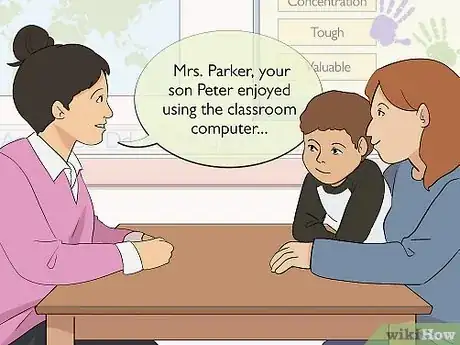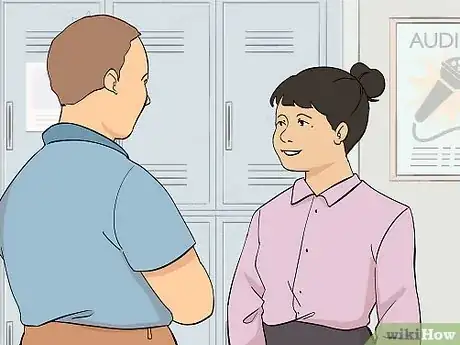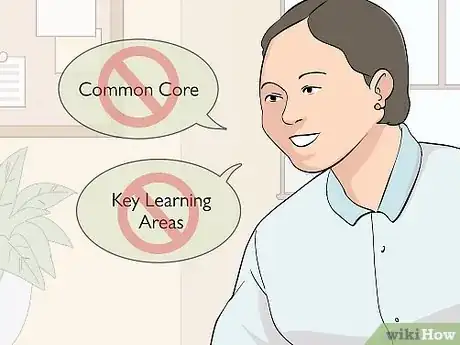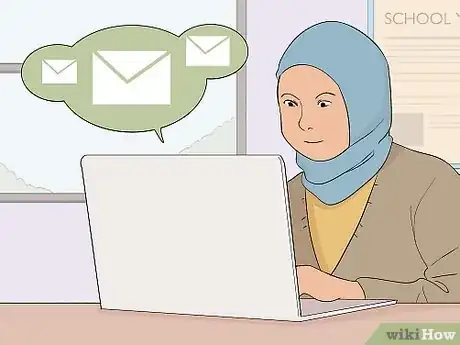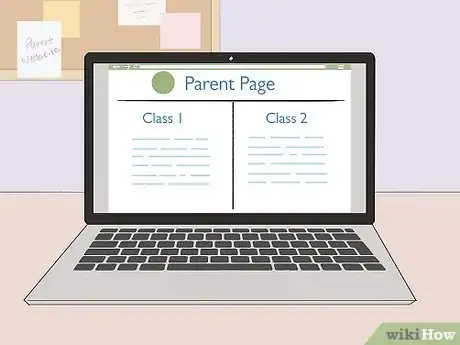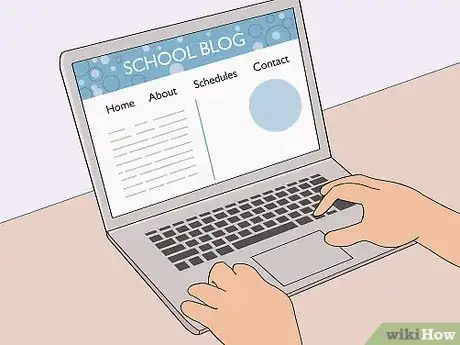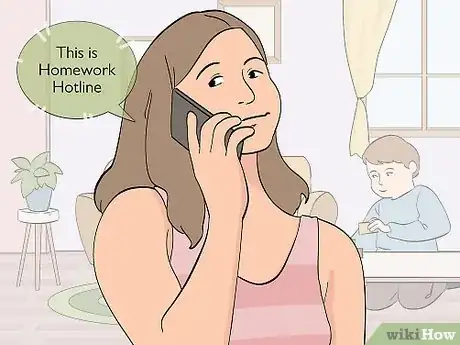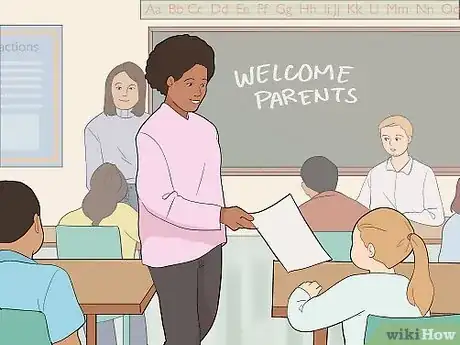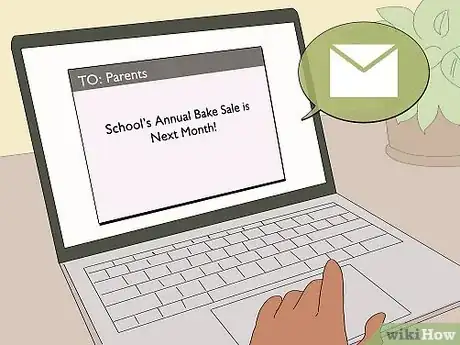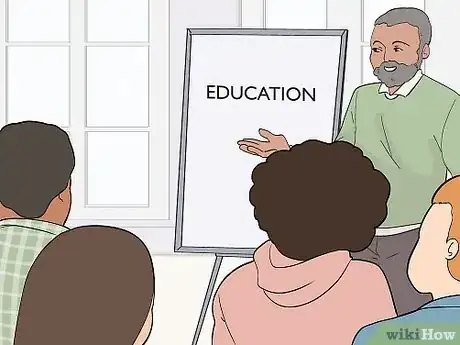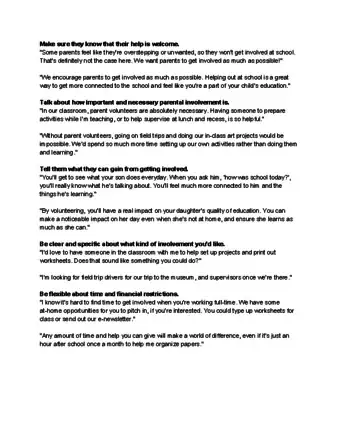This article was co-authored by Alexander Ruiz, M.Ed.. Alexander Ruiz is an Educational Consultant and the Educational Director of Link Educational Institute, a tutoring business based in Claremont, California that provides customizable educational plans, subject and test prep tutoring, and college application consulting. With over a decade and a half of experience in the education industry, Alexander coaches students to increase their self-awareness and emotional intelligence while achieving skills and the goal of achieving skills and higher education. He holds a BA in Psychology from Florida International University and an MA in Education from Georgia Southern University.
This article has been viewed 21,135 times.
Getting parents to be active in their child’s school has educational and community benefits. Although this can seem like a daunting task, a few active approaches can help bring parents into school life. Maintaining active, positive communication is important, but schools also benefit from personalized volunteering opportunities and outreach programs. By offering many ways for parents to feel welcome, you may see the involvement rate climb.
Steps
Improving Communication with Parents
-
1Greet parents in the beginning of the school year. Doing this engages parents right away. It helps them understand what to expect from the school, teachers, and administrators. If you wait too long to reach out, parents may find getting involved to be difficult. Any faculty member can do this, but teachers benefit most from communicating directly with families.[1]
- You can send parents a letter or email about the school program, such as the classroom curriculum and any school events.
- You may also reach out to parents through a phone call or by speaking with them in person.
-
2Personalize communications to each family. Every parent expects the mass-produced notes a lot of schools send home. These kinds of notes don't distinguish one child from the next. Address parents directly when possible, and specifically talk about their child and their school experience. Both principals and teachers may send these communications, but teachers will do it more often.[2]
- For instance, say, “Dear Mrs. Parker, your son Peter enjoyed using the classroom computer and I think this typing program can help him learn more.”
- For example, a phone call or individualized email can give a teacher a chance to start a direct conversation with a parent.
- To be engaging, refer to parents and students by name. Relate information that the parents are interested in, such as their child’s classroom work and school events.
Advertisement -
3Start out with positive, friendly discussions. If someone approaches you, you feel more comfortable when the person is friendly. Both administrators and teachers need to connect with parents in a pleasant way, since a negative impression can last the entire school year. You may find that many parents are more open and involved when they feel like the teachers and administrators are on their side.[3]
- For instance, say, “Hello Mrs. Parker. Your son Peter says he likes drawing. I’m happy to have him here this year and eager to see what he creates.”
- Positive communications are easiest in the beginning of the year. Don’t wait until you have to discuss a student’s disciplinary problem to contact parents.
- Some communications will be negative. Try to handle these quickly and calmly.
-
4Avoid jargon when communicating with parents. Always handle communications in a straightforward way. School staff is trained to understand various educational terms, but parents may not know these terms. Parents want to know what their child is learning in school and how they’re growing. This is most important for teachers, since they are most likely to speak to parents directly.[4]
- For example, don’t mention “Common Core” or “Key Learning Areas.” If you have to talk about it, explain it in simple terms anyone can understand.
- Mentioning “resource-based” teaching methods is not descriptive. Explain what the students are learning and experiencing.
- Talking about “no excuses” policies and “achievement” sounds cold and doesn’t address students and parents on an individual basis.
- Instead, say, “Your child is learning a special way of doing math that allows her to add numbers in her head. This will help her succeed both inside and outside of school.”
-
5Ask parents for feedback on their child’s education. Give the parents a chance to be heard. Build trust by taking the time to listen to them and appreciate their thoughts and feelings. Always try to meet these concerns and encourage parents to stay in touch with the school.[5]
- As a teacher, you can say, “What do you hope your son learns in English class? What can we do to help him learn?”
- A principal may ask, “Do you have any concerns about the educational process?” You can alter school policies or provide help to students who need it.
- Work together with the parents to set goals, such as spending more time at home studying math or meeting with the teacher each week.
-
6Adjust outreach strategies according to meet the parent’s needs. All parents have different life circumstances, so tailor your communication efforts appropriately. Think about the parent’s work schedule, language, culture, and areas of strength. Also consider what contact methods are available for them. It’s important for both school administrators and teachers to do this.[6]
- For instance, talking to a parent who doesn’t speak your language is difficult. A school administrator can hire a translator to help.
- Some parents may work odd hours or hold down multiple jobs. A teacher may offer to meet them for a discussion during a lunch break or after school.
- Some parents may not be comfortable chaperoning a group of children. Encourage them to get involved in other ways, such as by buying supplies.
Keeping Parents Informed
-
1Give parents clear information about the school and classroom. Naturally, parents are curious about what their children are experiencing. This information should be given at the beginning of the year. School administrators can update parents on school policies, while teachers can provide information on classroom activities. Keep this information as concise as possible.[7]
- For instance, many school administrators send school policy handbooks home at the beginning of the year.
- Many teachers provide a curriculum overview. Teachers can also send home notes throughout the year explaining each child’s progress.
-
2Inform parents what mastery skills are required for each grade level. Parents can use this information to keep track of how well their children are doing. This enables them to help with the educational process when needed. Parents who have these clear goals in mind may show more interest and become more active in the school.[8]
- School administrators can provide a basic overview of these skills. Teachers can offer more details about what they will teach in class.
- For example, a young student might be expected to know how to read as well as add numbers.
- An older student may be expected to have a grasp on basic algebra and read proficiently.
-
3Send consistent communications throughout the school year. After touching base with parents the first time, keep the connection strong. You can send home notes, make calls, or communicate in other ways. Consistency helps parents stay interested, even when other worries like work can get in the way. Teachers will have the most contact with parents, although the principal can check in as needed.[9]
- For example, the school staff can create a newsletter that keeps families up to date on school events.
- As a teacher, you may send home notes. Say, “Tony learned how electricity works. You can help him study the worksheet I gave him to take home.”
-
4Maintain a parent page on the school website. Most schools have online websites that help parents stay up to date with school events. Dedicate a page on the website to providing parents with information they need about the school and educational program. A faculty volunteer, such as a secretary or the principal, can handle this.[10]
- For example, the principal can post about school policies and link to outside resources such as government agencies or tutoring services.
- If possible, keep a separate page for each classroom. Each teacher can keep parents updated about what goes on in their classroom.
-
5Maintain a school blog. Blogs are free to set up on sites like Wordpress. Use the blog to post general school updates such as event and volunteering opportunities. Blogs are easy to set up, keep parents informed, and can lead to a sense of community.[11]
- The principal or another faculty member can take care of a school blog and respond to any concerns posted in the comment section.
- If you are a teacher, set up a blog for your classroom. It is a good way to stay in touch with parents and let them know what’s going on in class.
-
6Set up a homework hotline. If you’re a principal, use the school’s phone system to create a hotline anyone can call to get homework information. Have all the teachers submit the day’s assignments, then have someone record a message parents can hear by calling the line.[12]
- This allows parents to stay up to date on what children need to do in class. It eliminates confusion and negative notes home.
Setting up Activities and Volunteer Opportunities
-
1Host an open house night to bring in parents. Open house night usually begins at the beginning of the year. All parents are welcome to come in, meet the faculty, and learn about the classes their kids are in. If you are a principal, invite parents and make them feel welcome.[13]
- Both the principal and teachers can be a great time to talk about school events and volunteering opportunities.
- Get to know the parents to build a positive relationship. There usually isn’t time at open houses to have extensive conversations.
-
2Host parent-teacher meetings at the school. These meetings give parents a chance to come in and get directly involved with the educational process. If you’re the principal, pick a night, then let parents choose a time to meet with the teacher. Then have the teachers use the time to talk about how the child is doing and address any concerns.[14]
- Teachers can be involved with multiple meeting nights throughout the year.
- If you’re a teacher, you may also want to invite parents to meet with you at other times.
- If you’re the principal or an administrator, consider being present to greet parents and make them feel welcome.
-
3Begin a classroom volunteer program. If you’re a teacher, invite parents to come in and help the class for a day. This works best with younger children. Give each parent a chance to supervise the class and assist you as needed. Parents get involved, but they also get a chance to understand how the classroom operates.[15]
- For instance, if you are an art teacher, parents can help cut paper or show children how to use supplies.
- Volunteers can take some of the pressure of running a classroom off a teacher. However, remember that not all parents have time to participate.
-
4Publicize volunteering opportunities by telling parents. Keep parents informed of these opportunities. If you’re a principal, send home notes informing parents about school-wide events. Teachers can provide information about opportunities in their classrooms. Let the parents know as soon as possible and sent them reminders every few weeks as the event approaches.
- For example, a principal might inform parents, “The school’s bake sale is next month and any baked goods are welcome.”
- If you’re a drama teacher, you might say, “We need parents to help make the costumes the kids designed.”
- An science teacher might say, “We need chaperones for our field trip to the science museum next month. Please contact me to sign up!”
-
5Invite parents to school events made by students. Principals can invite the whole school or outside community, while teachers may only handle inviting the families of their students. Set up events children can participate in, such as plays, presentations, or art galleries. Let the parents be the audience. You can give students a chance to shine while also meeting and engaging parents.[16]
- If you’re a teacher, you can supervise students and have them write notes to thank parents for attending.
- For instance, if you’re a language teacher, you can send home a note that says, “The students wrote stories for class and now they would like to share their work with you.”
-
6Have parents talk about their skills in class. Some parents may have interesting knowledge or skill sets you can use in class. If you’re a teacher, invite them in to build a personal connection to the class by sharing what they know. This is a way to show respect to parents as unique individuals.[17]
- For example, if you’re a drama teacher, invite parents with woodworking skills to help build stage props.
- If you’re a social studies teacher, you might ask a police officer to come in and share knowledge about their line of work.
-
7Post a wish list of goods the classroom needs. To encourage all parents to contribute, keep this list simple and inexpensive. Teachers will usually be responsible for identifying their classroom’s needs. Balance out material needs with other involvement opportunities. Post this list on the classroom door, webpage, blog, and in other locations parents will see.[18]
- For example, ask for boxes of tissues, craft supplies, or computer software.
- You can put volunteer opportunities on the list. Include short commitments, such as stapling newsletters, in addition to long ones like organizing events.
-
8Create a parent resource center in the school. A resource center stocks information parents can use to care for their children. The material can be anything, such as printouts, videos, and numbers to local parenting groups and government agencies. The school administrators may compile this information, but ask teachers for input. These resources encourage parents to learn and get more active in school life.[19]
- A resource center may include information on topics like child development, nutrition, and drug education.
-
9Host educational nights that bring in interested parents. Bring in speakers that have a background in relevant topics, such as childhood development, managing homework, or sleep schedules. The principal will usually organize the event, although teachers can help, too. You may also host events, like family reading nights or art workshops, to give parents a reason to get involved.[20]
- For instance, if you’re a principal, bring in speakers from a government agency or university extension office.
- If you’re an art teacher, for example, you can lead a family painting night, talk about why art is important, and greet parents.
Reaching Out to Parents
Expert Q&A
-
QuestionHow do I talk to my child's teacher?
 Alexander Ruiz, M.Ed.Alexander Ruiz is an Educational Consultant and the Educational Director of Link Educational Institute, a tutoring business based in Claremont, California that provides customizable educational plans, subject and test prep tutoring, and college application consulting. With over a decade and a half of experience in the education industry, Alexander coaches students to increase their self-awareness and emotional intelligence while achieving skills and the goal of achieving skills and higher education. He holds a BA in Psychology from Florida International University and an MA in Education from Georgia Southern University.
Alexander Ruiz, M.Ed.Alexander Ruiz is an Educational Consultant and the Educational Director of Link Educational Institute, a tutoring business based in Claremont, California that provides customizable educational plans, subject and test prep tutoring, and college application consulting. With over a decade and a half of experience in the education industry, Alexander coaches students to increase their self-awareness and emotional intelligence while achieving skills and the goal of achieving skills and higher education. He holds a BA in Psychology from Florida International University and an MA in Education from Georgia Southern University.
Educational Consultant I recommend emailing them ahead of time to set up an appointment to talk. Teachers can be very busy, so letting them know that you'd like to discuss something beforehand will be a better route than showing up unexpectedly.
I recommend emailing them ahead of time to set up an appointment to talk. Teachers can be very busy, so letting them know that you'd like to discuss something beforehand will be a better route than showing up unexpectedly.
References
- ↑ http://www.projectappleseed.org/encouraging-parent-involvement
- ↑ http://dera.ioe.ac.uk/12136/1/download%3Fid%3D156367%26filename%3Dhow-to-involve-hard-to-reach-parents-full-report.pdf
- ↑ http://www.projectappleseed.org/encouraging-parent-involvement
- ↑ http://www.educationworld.com/a_curr/curr200.shtml
- ↑ http://www.readingrockets.org/article/getting-parents-involved-schools
- ↑ http://www.readingrockets.org/article/getting-parents-involved-schools
- ↑ http://www.educationworld.com/a_curr/curr200.shtml
- ↑ http://www.educationworld.com/a_curr/curr200.shtml
- ↑ http://dera.ioe.ac.uk/12136/1/download%3Fid%3D156367%26filename%3Dhow-to-involve-hard-to-reach-parents-full-report.pdf
- ↑ http://dera.ioe.ac.uk/12136/1/download%3Fid%3D156367%26filename%3Dhow-to-involve-hard-to-reach-parents-full-report.pdf
- ↑ http://dera.ioe.ac.uk/12136/1/download%3Fid%3D156367%26filename%3Dhow-to-involve-hard-to-reach-parents-full-report.pdf
- ↑ http://education.ohio.gov/Topics/Other-Resources/Family-and-Community-Engagement/Getting-Parents-Involved/Sample-Best-Practices-for-Parent-Involvement-in-Sc
- ↑ http://education.ohio.gov/Topics/Other-Resources/Family-and-Community-Engagement/Getting-Parents-Involved/Sample-Best-Practices-for-Parent-Involvement-in-Sc
- ↑ http://education.ohio.gov/Topics/Other-Resources/Family-and-Community-Engagement/Getting-Parents-Involved/Sample-Best-Practices-for-Parent-Involvement-in-Sc
- ↑ http://www.projectappleseed.org/encouraging-parent-involvement
- ↑ http://www.readingrockets.org/article/getting-parents-involved-schools
- ↑ http://www.educationworld.com/a_curr/curr200.shtml
- ↑ http://www.educationworld.com/a_curr/curr200.shtml
- ↑ http://education.ohio.gov/Topics/Other-Resources/Family-and-Community-Engagement/Getting-Parents-Involved/Sample-Best-Practices-for-Parent-Involvement-in-Sc
- ↑ http://dera.ioe.ac.uk/12136/1/download%3Fid%3D156367%26filename%3Dhow-to-involve-hard-to-reach-parents-full-report.pdf

